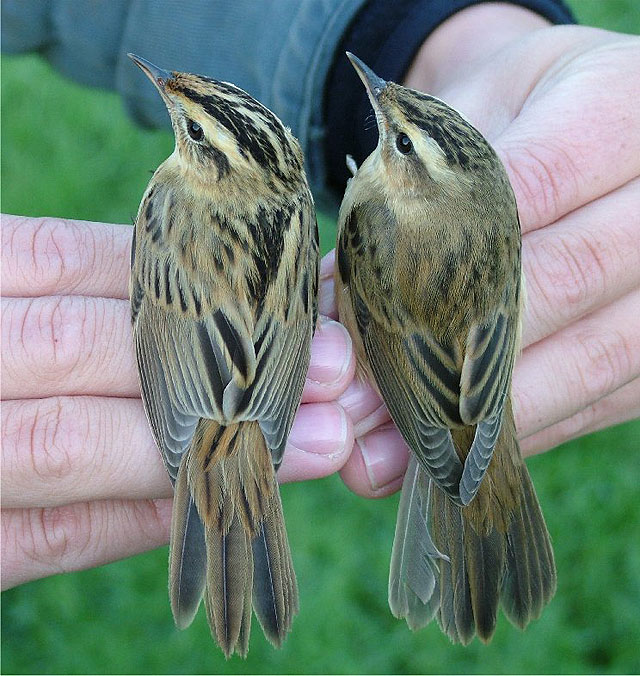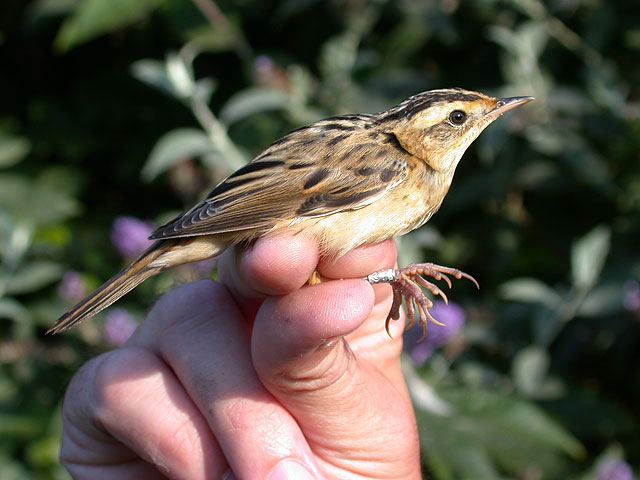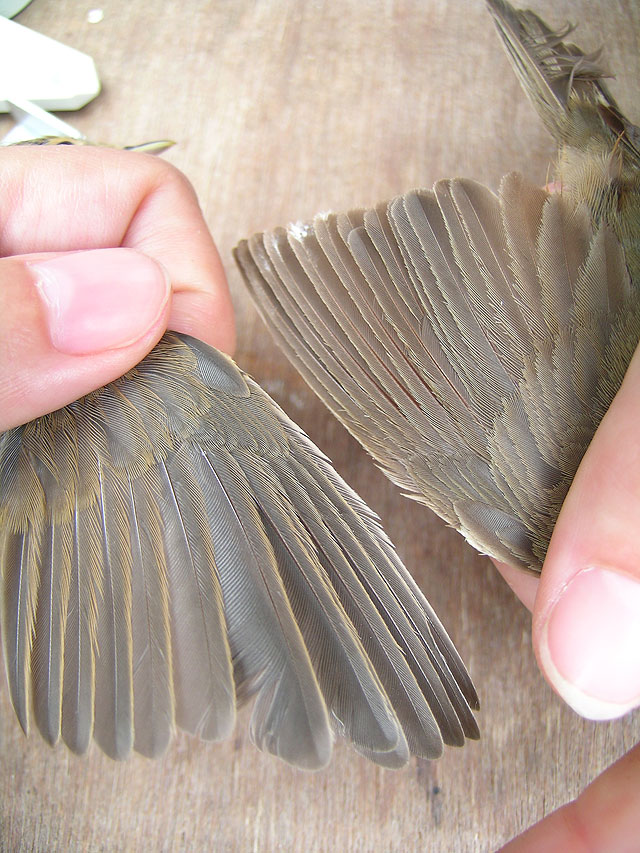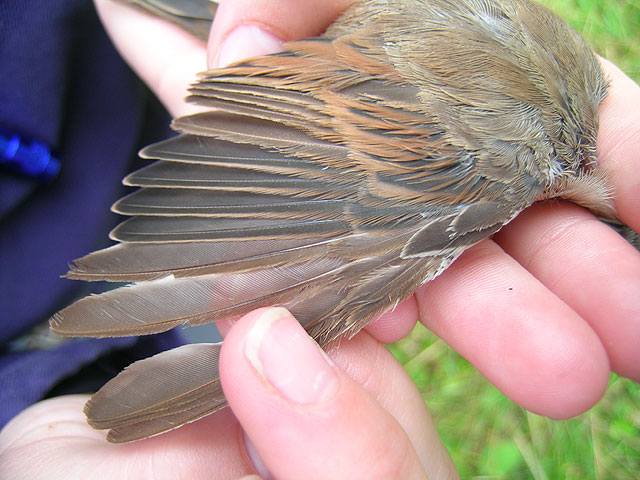
Aquatic (left) and Sedge Warbler: A fresh immature Aquatic Warbler with Sedge Warbler. Note how fresh and clean the flight feathers are, including the tertials (photo: Dawn Balmer).
Birders may find it interesting to think about how to age some of the birds that they see, and Aquatic Warblers can serve as a good introduction.
There are really two ways to age birds:
- plumage pattern
- plumage state
The former requires some experience of the species in question, whereas the latter is really just a case of thinking of the basic principles of moult.
If we consider plumage pattern first, according to the main ringing guide to ageing passerines (Lars Svensson's Identification Guide to European Passerines), adult Aquatic Warblers are more likely to show fine streaking on the throat, breast and flanks. Immatures are generally more yellowy in colour and usually unstreaked below. Such features can be quite variable though, and shouldn't be relied upon entirely.

Aquatic Warbler: Another immature Aquatic Warbler. The pale lores also point to this bird being an immature, but note the extent of the streaking on the underparts, a feature often associated with adults (photo: Dawn Balmer).
It is generally much safer to think about the state of the plumage and what this can tell us. Similar to other Acrocephalus warblers, Aquatic Warblers have quite an interesting moult pattern. Most passerines will leave the nest with a set of poor-quality feathers, and will then moult these into more sensible plumage in relative safety in the autumn (for example spotty Robins turning into red-breasted Robins). However, this isn't the case in Acrocephalus warblers. Young birds in the nest will already have begun to grow a new generation of contour feathers before fledging, and won't actually moult any feathers after leaving the nest. They will then migrate, and undergo a complete moult (including wings and tail) in late winter before northward migration. As an adult, they will then not moult again until they have bred, migrated south again, and will then moult (completely) in late autumn in the wintering grounds.
So, if we think about what we're looking at on a bird at this time of year, we should be able to infer quite a lot of things. If the bird we're looking at has primaries (and secondaries, tertials and tail) that are 6–8 weeks old, then these will be feathers grown in the nest, and the bird is an immature. If these feathers are 6–8 months old, then these were grown before a breeding season and migration and the bird is an adult.
So what is the difference between 6–8 week old feathers and 6–8 month old feathers? The simple answer is wear. See the example below of an adult and immature Reed Warbler next to each other. The difference in feather state is obvious, and I don't need to tell you which is which.

Reed Warbler (photo: Mark Grantham).
As mentioned earlier, this is the case for Acrocephalus warblers, and for many other groups, the pattern of moult is very different. If we think about Sylvia warblers then we must think differently. In this family, adults will moult before autumn migration not after, so the same does not apply here. The image below shows an adult Common Whitethroat in the process of autumn moult, and the difference between the one-year-old feathers and one-week-old feathers is again very obvious! But, once this bird has finished moulting, we then have to think more about feather pattern than feather state.

Common Whitethroat (photo: Mark Grantham).
So, moult really is the key to understanding how to age most birds. All the rules apply to all species, but only as long as you understand what birds are doing and why!
And that's the simple answer to ageing these birds!


